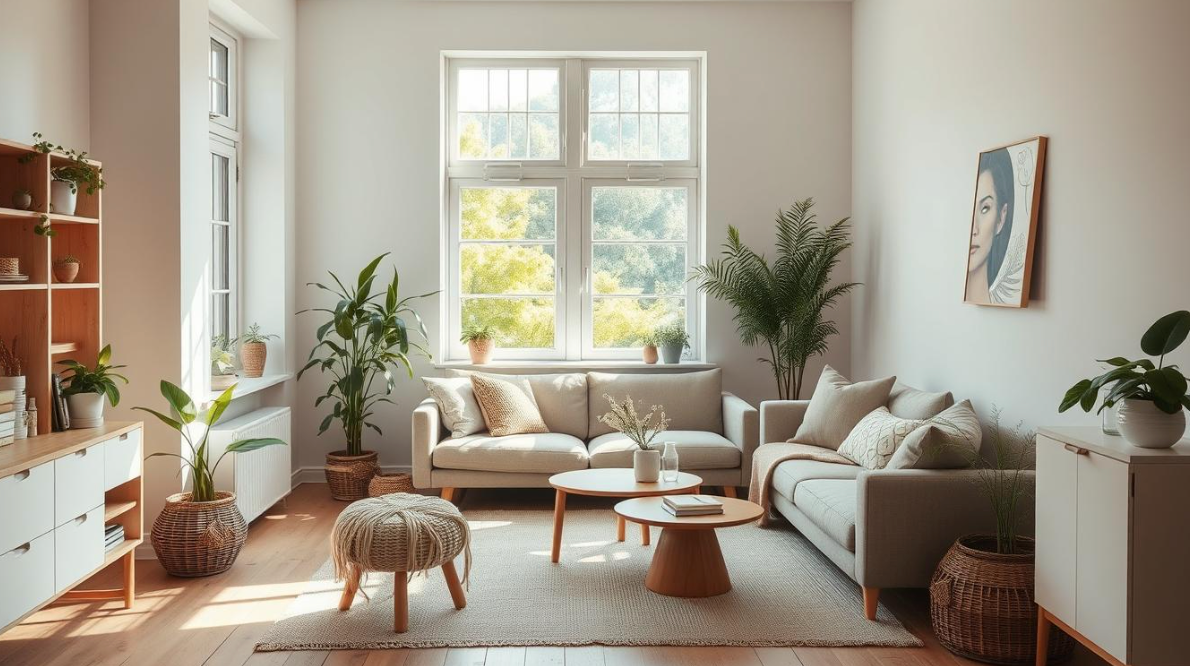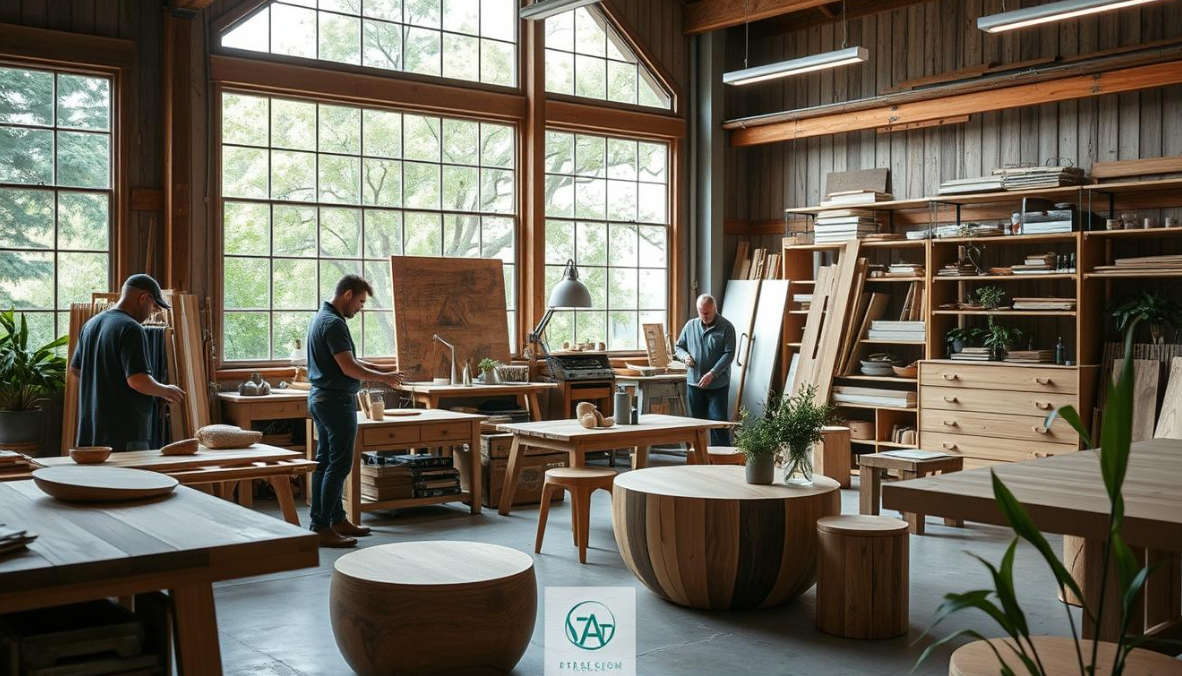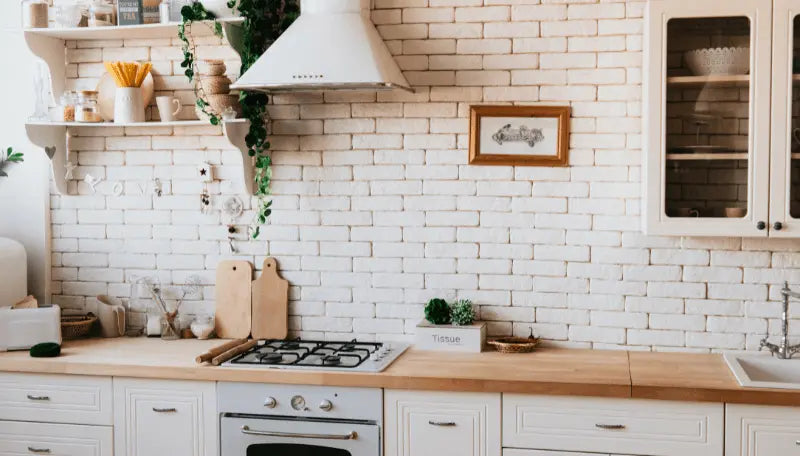Scandinavian interior design style is becoming an inspiration for many people who want to introduce the principles of sustainable living into their homes.
The concept of less waste, which combines minimizing unnecessary items and caring for the environment, finds its place in modern interior design projects. This style combines aesthetics, functionality and the use of natural materials, which promotes not only efficiency but also the protection of resources.
Emerging research shows growing ecological awareness among designers and consumers, making ecology a key element of contemporary design.

Sustainable lifestyle
Sustainable living has become a key topic in the face of increasing changes
climate and ecological degradation. The growing awareness of society in the field of environmental protection has contributed to the popularity of the less waste idea, which focuses on the efficient use of resources. This lifestyle influences shopping habits and daily decisions, which in the long run brings benefits to both people and nature.

Our everyday life increasingly includes activities aimed at reducing
negative impact on the environment. Examples of such actions include the selection of local
manufacturers or recycling materials. It is clear that sustainable living is becoming not only a fashion but also a necessity, considering the current ecological challenges and related climate change.
The importance of less waste in interior design
The less waste philosophy plays an important role in interior design, resulting in
reducing waste of raw materials and materials. In the context of Scandinavian style, striving for simplicity and functionality contributes to the efficient use of resources. Sustainable interior design is not only about aesthetics, but also responsibility for the environment.
When creating spaces that encourage savings, choosing durable materials is key. Scandinavian style often uses wood, rattan or linen, which not only contribute to creating a cosy atmosphere, but also help reduce the negative impact on the environment. It is worth noting that the use of recycled elements in the arrangement reinforces the idea of less waste, making the space more unique and ecological.
Responsible interior design involves using local craftsmen and manufacturers, thus supporting the local economy. This approach not only improves the quality of the arranged spaces, but also affects the longer use of products, which is in line with the principles of Scandinavian style.
The minimalism characteristic of this style leads to simplifying life and reducing the consumption of resources, which is key in the context of less waste.
The introduction of the less waste philosophy in interior design not only improves the aesthetics of the space, but also promotes a sustainable lifestyle, which is increasingly appreciated in modern societies. Creating eco-friendly interiors is becoming not only a fashion, but also a conscious choice, thanks to which you can save on renovation costs and minimize the impact on the planet.
Scandinavian interior design style: durability and functionality
Scandinavian interior design perfectly combines durability and functionality, offering practical solutions for modern homes. The basic element of this aesthetic is minimalism, which simplifies everyday life by reducing the number of furniture and unnecessary objects. Interiors enriched with natural materials, such as wood, become not only aesthetic, but also environmentally friendly.

Minimalism as a key to simplifying everyday life
Minimalism in Scandinavian interior design style helps organize space, providing order and tidiness. Subtle colors, including beige, white and earth tones, create a harmonious environment that affects the well-being of residents.
Eye-friendly interiors encourage relaxation while offering functionality and
aesthetics.
Recycling and reusing materials
Recycling and reusing materials are of particular importance in Scandinavian interior design. Designers focus on local producers and ecological solutions that reduce the impact on the environment. The use of recycled wood and reclaimed fabrics is in line with the less waste philosophy, promoting a responsible approach to design.
Supporting local producers and craftsmen
In Scandinavian interior design, supporting local producers and craftsmen is an important element. This approach not only contributes to sustainability, but also builds community bonds by reducing the carbon footprint associated with transportation. By collaborating with local artists and craftsmen, interiors become personal and unique.

Scandinavian tv cabinet tromso
Natural materials in Scandinavian designs
In Scandinavian interior design, natural materials play an important role, such as:
- Wood, especially local species such as spruce, birch or pine,
- Rattan, cotton and linen that add coziness,
- Smoked glass and porcelain give an elegant look.
Using these materials alongside light, neutral colours such as white, beige and grey creates a harmonious space conducive to relaxation. An ecological approach to shopping gives the opportunity to support local producers, which is a significant step towards sustainable development.
How to introduce Scandinavian interior design style into your own home
The introduction of Scandinavian style to interior design involves the use of several key principles that harmoniously combine aesthetics with functionality. A neutral color palette, including whites, grays and beiges, is an excellent base for creating cozy spaces. The use of natural materials such as wood, linen or cotton not only supports the concept of ecology, but also contributes to the creation of an atmosphere in line with the Danish hygge style, which emphasizes comfort and harmony.

An important element of any arrangement is furniture with simple, minimalist forms. It is worth paying attention to products from local manufacturers that fit into the idea of less waste and the application of the recycling principle. Additionally, the selection of appropriate decorative elements such as woolen blankets or linen curtains, which add warmth and coziness to the interior, is important for creating a stylish space.





